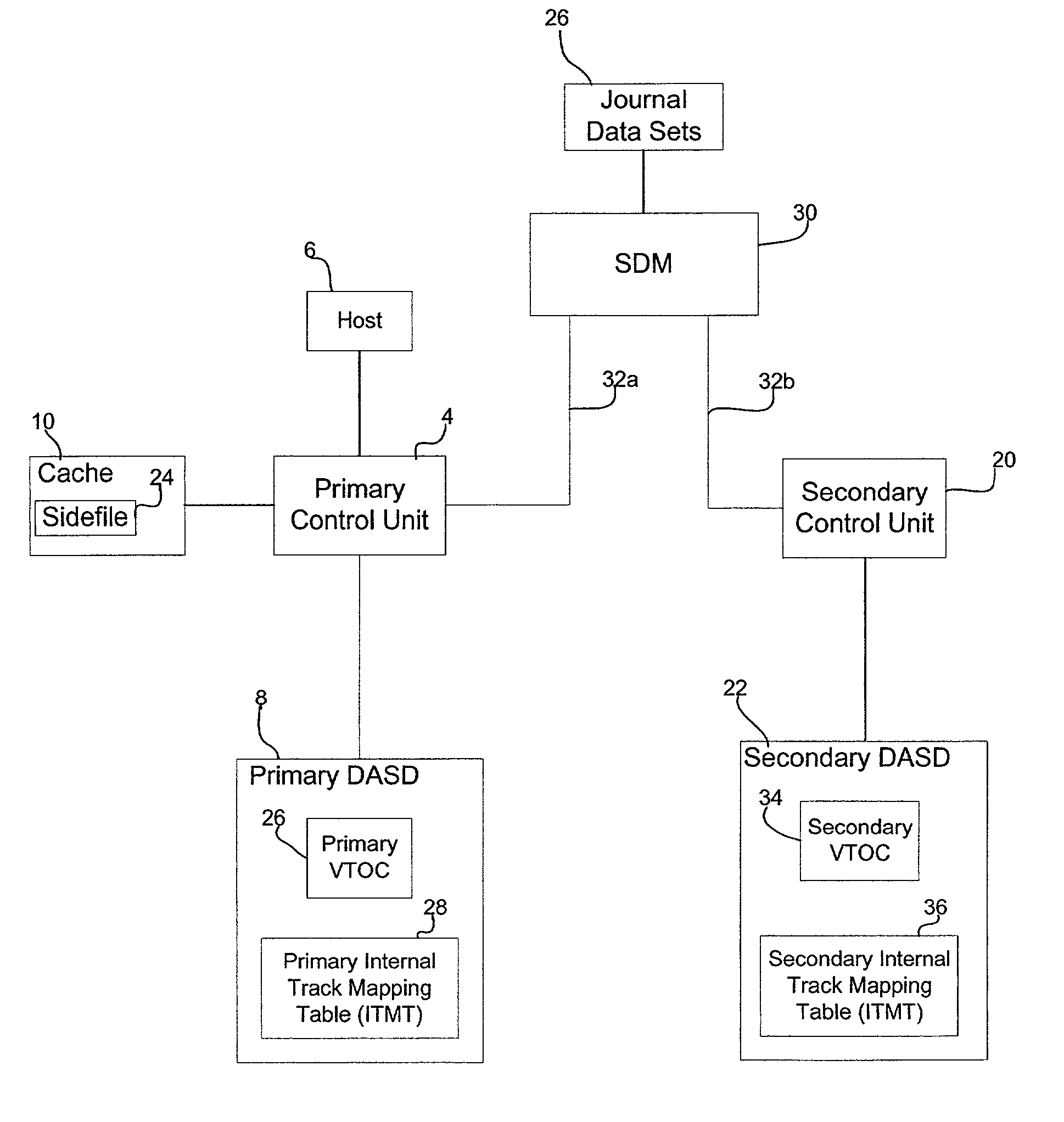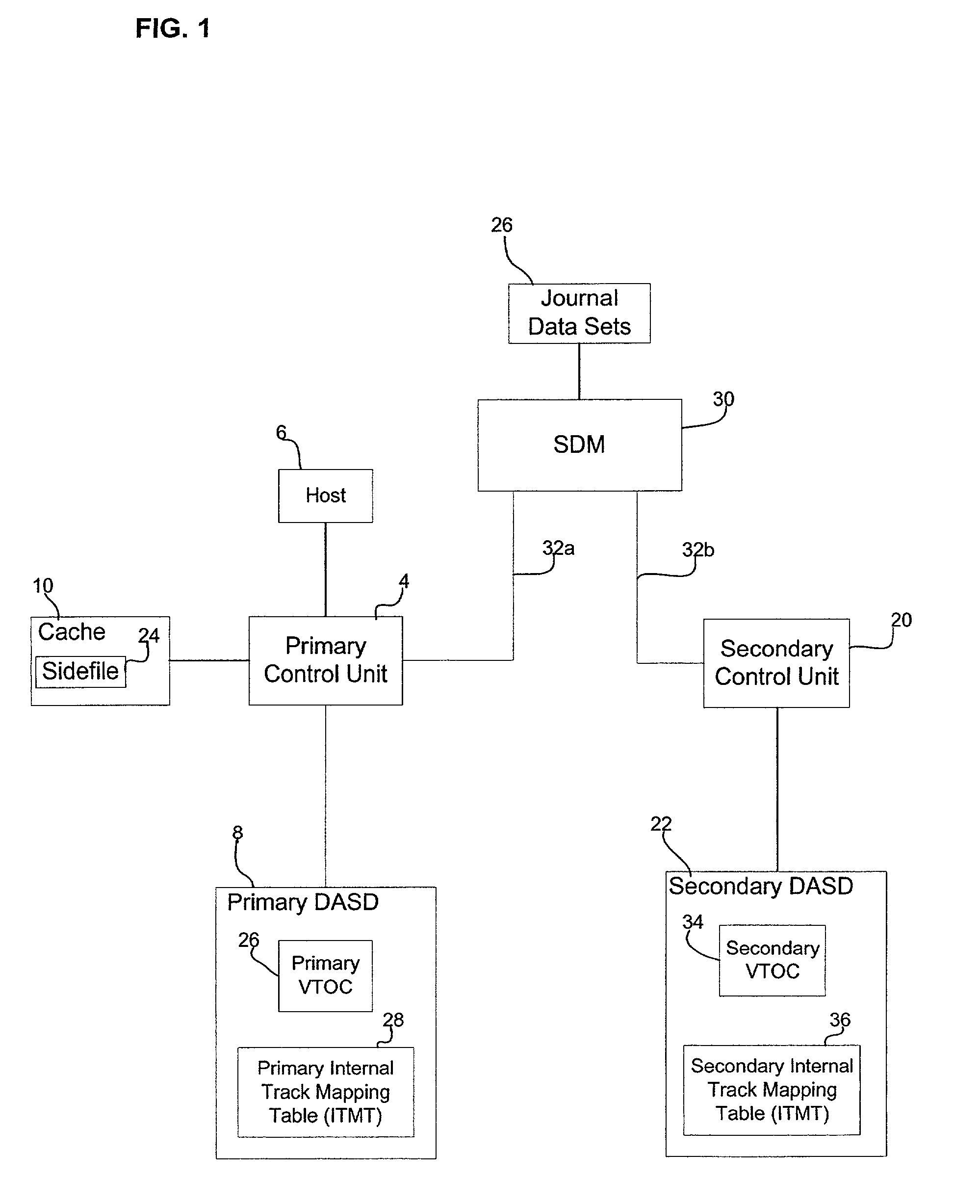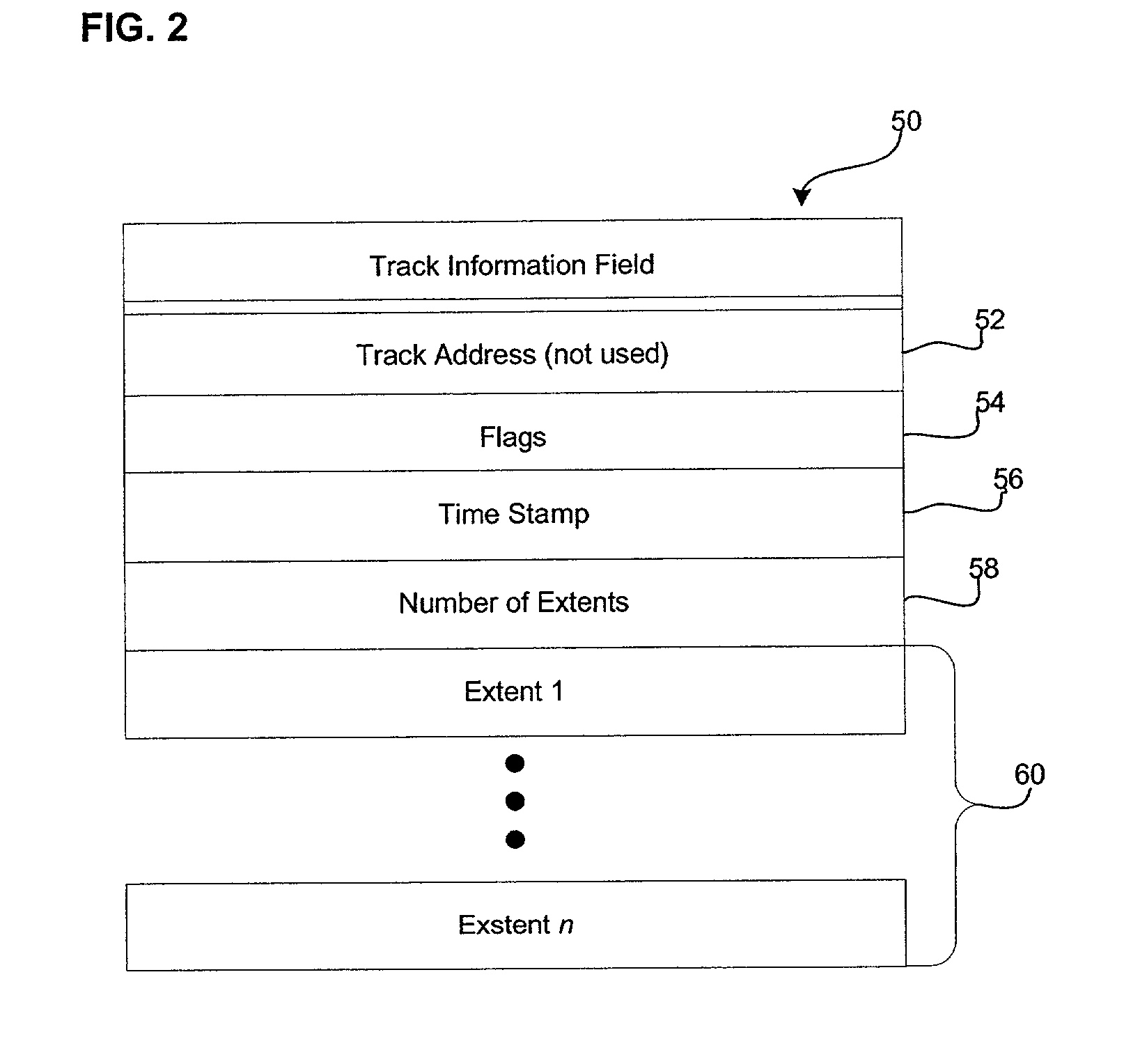Method, system, and program for discarding data in a storage system where uptdates to a primary storage device are shadowed in a secondary storage device
a storage system and data technology, applied in the direction of multi-programming arrangements, memory adressing/allocation/relocation, instruments, etc., can solve the problems of secondary dasd running out of storage space, i/o operations, and loss of volumes uptdates, etc., to achieve the effect of affecting system performance, more time and i/o operations
- Summary
- Abstract
- Description
- Claims
- Application Information
AI Technical Summary
Benefits of technology
Problems solved by technology
Method used
Image
Examples
Embodiment Construction
[0013] Provided is a method, system, and program for releasing storage space in a first and second storage devices. Updates to the first storage device are copied to the second storage device to provide secondary storage for the updates. A first and second tables map data sets to addresses in the first and second storage devices, respectively. A first command is detected to invalidate data sets in the first table. The addresses in the first table comprise virtual addresses, and a third table provides a mapping of the virtual addresses to physical storage locations in the first storage device. A second command is generated to update the second table to invalidate the data sets in the second storage device invalidated in the first table by the first command. A third command is detected to invalidate the virtual addresses in the third table used by the data sets invalidated in the first table to free the physical storage locations in the first storage device pointed to by the invalidat...
PUM
 Login to View More
Login to View More Abstract
Description
Claims
Application Information
 Login to View More
Login to View More - R&D
- Intellectual Property
- Life Sciences
- Materials
- Tech Scout
- Unparalleled Data Quality
- Higher Quality Content
- 60% Fewer Hallucinations
Browse by: Latest US Patents, China's latest patents, Technical Efficacy Thesaurus, Application Domain, Technology Topic, Popular Technical Reports.
© 2025 PatSnap. All rights reserved.Legal|Privacy policy|Modern Slavery Act Transparency Statement|Sitemap|About US| Contact US: help@patsnap.com



